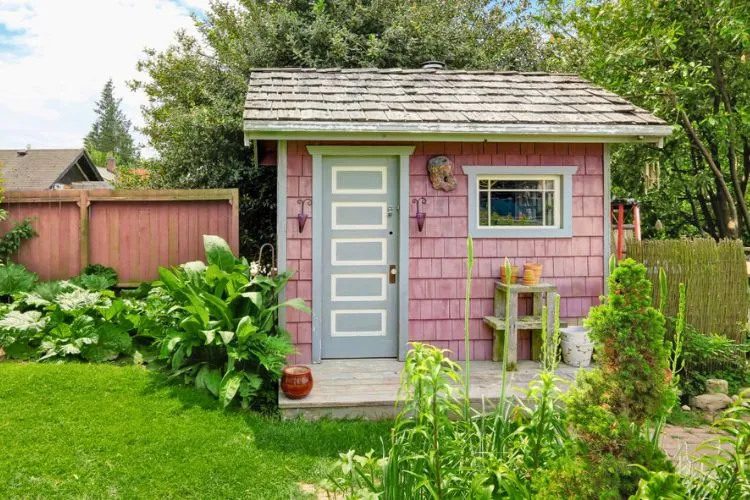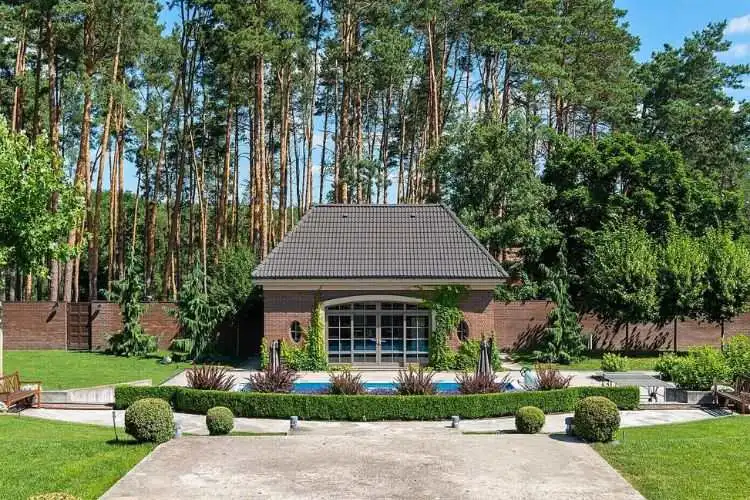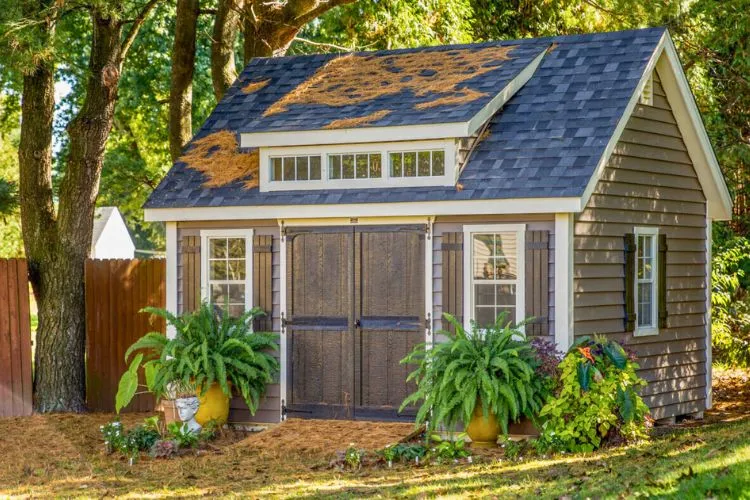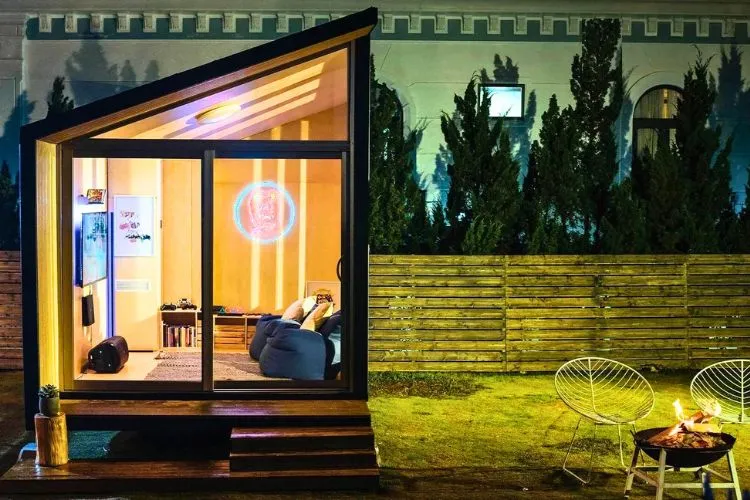When it comes to maximizing the storage space on your property, sheds are an invaluable asset. However, the addition of multiple sheds is not as simple as purchasing a kit and setting up wherever you please.
There are zoning laws, permits, and regulations to consider. For homeowners pondering, “how many sheds can I have on my property?” this guide will explain the complexities of regulations and provide the necessary knowledge to plan accordingly.

Contents
How Many Sheds Can I Have On My Property?
The first hurdle to understanding how many sheds your land can sustain revolves around local zoning laws. Zoning regulations are designed to maintain order within a community and ensure that properties are used in a way that fits within the character and plans of the municipality.
Most residential areas allow 1-2 small sheds, but larger sheds or multiple sheds may require permits. It’s best to check with your local zoning office for their specific rules.
Property Size and Zoning Categories
Your lot size is a significant factor in determining how many sheds you’re allowed. Generally, larger properties can house more sheds, but this varies by zoning categories. Zoning categories classify land into sections like residential, commercial, and agricultural, each with its own set of rules.
Setback Requirements
Setback regulations dictate the distance a shed must be from property lines, other structures, and streets.
These restrictions aim to prevent fires from spreading and maintain an aesthetically pleasing neighborhood. Therefore, the number of sheds you can have might also be limited by the space available after adhering to setbacks.
Building Codes Compliance
Building codes ensure that structures are safe and resilient. When building a shed, you must ensure it adheres to local building codes which may dictate materials used, size, and even the color of your shed.
Permissions and Permitting Process
Before putting up a shed, investigate whether you need a permit. Smaller sheds often do not require permits, but local regulations vary. Knowing the process helps anticipate the timeline and involved costs.

Your local building authority can provide you with information regarding when a permit is needed. If your shed exceeds certain dimensions, a permit is likely required. In some areas, even smaller sheds need permits due to special district requirements.
Step-by-Step Guide to Approval
Begin by submitting a permit application complete with your shed’s specifications and a site diagram. Your property might be subject to inspection before and after construction to ensure compliance.
It’s crucial to follow the exact process outlined by your local authorities to avoid costly errors or the need to remove non-compliant structures later.
You may also find useful: Are Gazebos Safe in Lightning?
Legal and HOA Considerations
If you live in a community governed by a Homeowners’ Association (HOA), there will be additional restrictions to consider. These are set up to maintain the visual harmony and perhaps the property values in the community.

HOA Restrictions and Approval Process
HOA regulations often limit the number and appearance of outdoor structures. Engage early with your HOA to understand the covenants, conditions, and restrictions (CC&Rs) before planning your shed.
You will likely need to get approval from the HOA board, which may include showing them your design and colors.
Ensuring Compliance with Neighborhood Standards
Neighbors can be allies or obstacles when adding structures to your property. Being aware of neighborhood standards and engaging in good communication can prevent conflicts and ensure your addition is accepted and compliant.
Pro Tips for Shed Placement and Maximization
Even within the regulations, there’s room for smart planning to get the most out of your sheds. Proper placement not only extends their utility but also potentially adds aesthetic value to your property.

Shed Organization Best Practices
An orderly shed maximizes space and functionality. Invest in storage solutions like shelves, hooks, and bins. Group items by use and frequency of access, and ensure that the layout allows easy movement inside the shed.
Storage Solutions and Customizations
Customize your shed for its intended purpose. If it’s for gardening, include spaces for tools and potting. For a workshop, plan for benches and equipment storage. Each shed should have a clear role to avoid clutter and disorganization.
Frequently Asked Questions (FAQs)
Can I have more than one shed on my property?
Yes, you can often have more than one shed on your property, but this is subject to local zoning regulations, building codes, and, in some cases, Homeowners’ Association (HOA) rules. The exact number of sheds allowed can depend on various factors, including the size of your property, its zoning category, and specific local or HOA restrictions. To avoid any issues, it’s essential to inquire with your local building authority or your HOA (if applicable) before adding additional sheds.
Do different municipalities have different shed allowances?
Absolutely. Shed allowances can vary significantly between municipalities due to different local zoning laws, building codes, and ordinances designed to address the unique needs and preferences of each community. Some areas may allow multiple sheds of various sizes, while others might have stricter limitations. It’s crucial to research and understand the specific regulations in your municipality before planning any new sheds on your property.
How do property size and zoning impact shed numbers?
Property size and zoning play a significant role in determining how many sheds you’re allowed to have. Larger properties typically have the capacity for more sheds, but local zoning laws will dictate the specifics. Zoning categories, such as residential, commercial, or agricultural, come with their own set of rules regarding structures like sheds. These rules can affect not just the number of sheds allowed, but their size, placement, and use. Always check with your local zoning board to understand how your property’s size and classification impact your ability to have sheds.
Sustainable and Eco-Friendly Shed Options
For homeowners interested in sustainable living, choosing eco-friendly shed options can make a significant difference. Here are some considerations for creating an environmentally conscious shed:
Sustainable Materials: Opt for sheds made from sustainable or recycled materials. Look for wood certified by the Forest Stewardship Council (FSC) or sheds made from recycled plastics and metals. These materials reduce the environmental impact of your construction.
Green Roofs: Consider installing a green roof on your shed. A green roof is covered with vegetation, which helps insulate the shed, reduce rainwater runoff, and provide a habitat for wildlife. It’s an eco-friendly addition that enhances the aesthetics of your garden.
Solar Power: Incorporate solar panels into your shed’s design to generate renewable energy. Solar-powered sheds can supply electricity for lighting, tools, and other small appliances, reducing your reliance on grid power and lowering your carbon footprint.
Rainwater Harvesting: Set up a rainwater harvesting system to collect and store rainwater from your shed’s roof. This water can be used for gardening, cleaning, or other non-potable purposes, promoting water conservation.
Enhancing Shed Security
Ensuring that your shed is secure is vital for protecting your belongings and maintaining peace of mind. Here are some tips to enhance shed security:
Sturdy Locks: Invest in high-quality locks for your shed doors and windows. Padlocks, hasp and staple locks, and deadbolts are effective options. Ensure that hinges are securely fastened and cannot be easily removed.
Security Lighting: Install motion-activated security lights around your shed. These lights deter potential intruders by illuminating the area when movement is detected, making it less attractive to thieves.
Alarm Systems: Consider adding a shed alarm system. These systems can be standalone or integrated with your home’s security system. Alarms provide an audible deterrent and can alert you to any unauthorized access.
Surveillance Cameras: Place security cameras around your shed to monitor activity. Modern cameras can send real-time alerts to your smartphone, allowing you to keep an eye on your property remotely.
Anchor Points: Secure large and valuable items within the shed using anchor points. Attach items like lawnmowers, bicycles, and power tools to the shed structure with heavy-duty chains and locks.
Creative Uses for Multiple Sheds
If you have the space and regulations allow for multiple sheds, consider diverse and creative uses for each one. Here are some ideas:
Garden Shed: Use one shed exclusively for gardening tools, supplies, and equipment. Organize the space with shelving, hooks, and bins to keep everything tidy and easily accessible.
Workshop: Designate a shed as a workshop for DIY projects, woodworking, or repairs. Include a sturdy workbench, proper lighting, and storage for tools and materials.
Home Office: Transform a shed into a quiet and dedicated home office. Insulate the walls, add electrical outlets, and furnish it with a desk, chair, and shelves for a productive workspace away from household distractions.
Art Studio: Create an art studio where you can explore your creativity. Ensure proper ventilation and natural light, and set up easels, storage for art supplies, and a comfortable seating area.
Guest House: Convert a larger shed into a cozy guest house for visitors. Include a bed, seating area, and basic amenities. Ensure it meets local building codes and provides a comfortable retreat for guests.
Conclusion:
The quest to find out how many sheds you can legally have on your property doesn’t have a one-size-fits-all answer.
Local laws and regulations, the size and dimensions of your property, and neighborhood or HOA restrictions all play a role in this decision.
By understanding this framework and planning carefully, you can make educated choices about adding storage sheds to your land.

Sergio Gomes, a passionate advocate for outdoor living and the male voice behind Shades Authority. With years of experience, Sergio is your trusted source for expert insights on gazebos, pavilions, cabanas, pergolas, and all things outdoor shade solutions. Join him on a journey to transform your outdoor spaces into stunning, functional retreats
